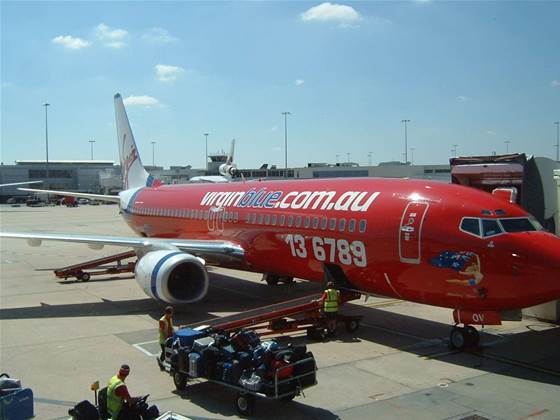Three years ago, Virgin Blue's IT department was overloaded with demands from the business they couldn't meet, struggling to support hundreds of applications and generally feeling like "order takers" rather than innovators.

"IT had become a roadblock to the business," says Virgin Blue IT Operations Manager Kevin Joyce.
"We were no longer respected.
"We were a black hole where ideas went to die."
Virgin Blue had become a victim of its own success.
Joyce, speaking at the NSC Collaboration Summit yesterday, told the story of the airline's ten year technology journey - a journey that took it from being the driver of a disruptive force in the airline industry, to being bogged down with maintenance and administration, to a restructure that ultimately led to a new level of agility today.
Virgin Blue, Joyce explained, began with humble goals. Upon launch at the start of the new millenia, the airline had been intent on operating only a handful of aircrafts in Australia - all the same model - offering cheap fares, simple fare classes, and a no-frills approach for the casual traveller.
"That drove simplicity in the business - which was great for IT," he said. "In fact, we had a mission statement of all the things we wouldn't do."
Information technology was a core part of Virgin's differentiating power - not only was the airline's fares cheaper than its larger rivals, but fares were sold online rather than via travel agents.
But over time, various "things Virgin would never do" were struck from the the airline's list as market conditions shifted.
First, the demise of Ansett in 2002 opened up an opportunity for rapid change. The goal for Virgin shifted - it would no longer just be a discount airline. Virgin decided it wanted equal footing with incumbent Qantas in the domestic market.
Further, in 2004 the airline began operating its first international flights to New Zealand and launched the 'Pacific Blue' brand, followed by the introduction of other Pacific Island destinations via the 'Polynesian Blue' brand in 2005.
By 2006, the airline had announced it would become a 'New World Carrier' - differentiated from the discount models of RyanAir and JetBlue but different also to the traditional international premium airlines. That journey was completed in 2008, when the airline began its first long haul flights.
In the four years of rapid change, Virgin's IT team took a beating.
At first, Joyce said, the only significant change was that "systems that had been done manually had to be automated to support the scale of the operation."
But soon the situation got out of hand.
"We started building more systems to meet the demands of this growth - [mostly] individual point solutions to solve specific problems," he said. "There was not a lot of view into the sustainability of those solutions."
Each of the airline's business units would come to IT seeking new systems as the airline's model changed.
"Suddenly there needed to be lounges at the airport, in-flight entertainment," Joyce said. "We were selling online holidays, cars, insurance online."
A team of six IT staff ballooned into several hundred.
The airline's IT team soon realised that the answer to the problem "wasn't just about hiring more people".
"We got to a point where business managers outnumbered engineers three-to-one," Joyce said.
"Business managers were writing requirements and had expectations but [the airline's IT department] didn't have the resources to deliver on it. We couldn't keep up with new demand or manage older systems."
That was the point in which IT became a "roadblock" instead of an innovator - the low-point from which a substantial restructure was required.
Read on to page two to find out how Virgin's IT team stepped out of the rut...




.png&h=140&w=231&c=1&s=0)






 iTnews Executive Retreat - Security Leaders Edition
iTnews Executive Retreat - Security Leaders Edition












_(1).jpg&h=140&w=231&c=1&s=0)



